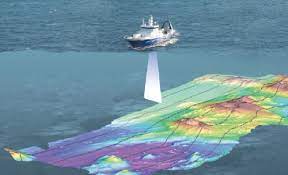The Most Dependable Marine Gravity and Magnetic Acquistion Company, Period.
Marine Gravity and Magnetic Acquisition
As leaders in marine gravity and magnetic acquisition, our data are recorded on a gyroscopically stabilized platform using either a LaCoste & Romberg Air/Sea Gravity Meter, a ZLS Fluid Damped Dynamic Marine Meter, or a Micro G LaCoste Meter. Depending on the area of the world being surveyed our magnetic data are recorded with either a Marine Magnetic SeaSPY Magnetometer or a Geometrics G-882 Magnetometer. To guarantee the success of each project, all crews are supplied with complete spare parts and operating supplies. In addition, four separate computers are provided to record gravity and magnetic locations including bathymetry and a spare.
Gravity and Magnetic Compliation
At Austin Exploration, we pride ourselves in the data we collect and ultimately process. As such, we have a carefully refined process for extracting this data because we only utilize the most current equipment and programs. To create the gravity and magnetic compilation, we begin with the compilation sequence that includes an analysis of navigational data utilizing gravity, water depth and other information. This data is used to compute the Eotvos gravity correction. An analysis is then made to determine the density of the ocean bottom sediments so the Bouguer gravity correction can be properly applied. During the process, all necessary terrain corrections are made and the gravity along traverses is merged at intersections with minimal distortion of the data. A written report describing the compilation procedure and the results is always provided to clients.
Gravity and Magnetic Interpretation
To ensure the most accurate gravity and magnetic data interpretation, a structural surface is computed using a three-dimensional solution for gravity data. The process begins with the construction of a Regional Gravity Map, which represents the gravity response to the density changes within the basement. This is then subtracted from the Bouguer gravity field to separate the residual gravity anomalies. Any pertinent information such as residual or derivative data, density contrast information, and the reference base for the geometric models are then entered into our computer program. The result is a residual grid that establishes a corresponding network of vertical prisms with a variable height on a reference surface. The output of the program includes the height of the prisms or structural surface whose computed gravity response matches the input gravity. The data can be contoured in feet or in meters.



